Spatialism is an Art Movement founded in Milan by Lucio Fontana, an Italian artist. This type of Art synthesizes colour, sound, space, movement, and time.
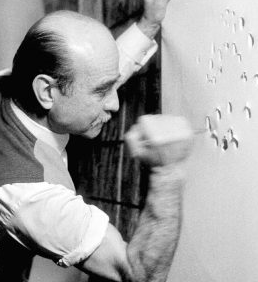
Image source:https://cardigallery.com/artists/lucio-fontana/
The movement was born after World War II. It advocated an art able to reject the naturalistic image and use of light, sound and space.
Origin of movement
- This art movement was contemporary to the Abstract Expressionism of the United States. The philosophy behind Spatialism was dispelled by its manifesto, Manifesto Blanco, which discussed the need for a distinctive ‘spatial’ form of art to capture the spirit of the post-war era. Manifesto Blanco was published in Buenos Aires in November 1946 in pamphlet form, compiled by Bernardo Arias, Horacio Cazenueve, and Marcos Fridman, and also signed by Pablo Arias, Rodolfo Burgos, Enrique Benito, César Bernal, Luis Coli, Alfredo Hansen and Jorge Rocamonte. Fontana did not sign the manifesto, probably because of his position, which was also officially recognized.
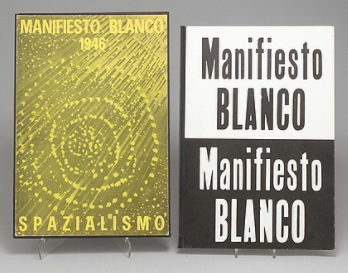
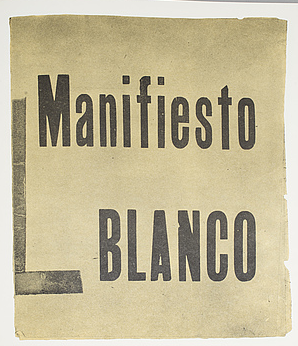
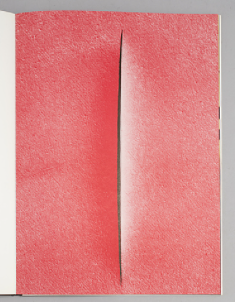
Images source: https://www.bukowskis.com/en/lots/1135381-book-signed-by-lucio-fontana
Spatialism represented a union of the fundamentals of science with Fine Arts, using tools, like television and Neon lighting to name a couple. According to ‘Manifesto Blanco‘, Spatialism was conceptualized to “transcend the area of the canvas or the volume of the statue, to assume further dimensions and become an integral part of architecture, transmitted into the surrounding space and using new discoveries in science and technology.”
Artists and the Artworks
Spatialism eventually began focusing on the negative aspects in the depiction of its subjects. Its subsequent manifestos dispelled the tenets of the expression, artificial emotions, and color scheme over geometrical space, rather than capturing the ‘real,’ as it exists.
- Fontana’s 1947 work, ‘Black Spatial Environment’ was a classic example of this theory. It consisted of a room painted in all black and another 1949 work, named ‘Spatial Environment’ lit by an array of Neon lights.

Image source: https://dailyartfair.com/artist/lucio-fontana
Image source: https://search.creativecommons.org/photos/0fea7c32-c5a6-4b91-94bc-ca4a033031da
Fontana’s revolutionary style not only created a niche for him, it became a powerful influence on several artists and art forms. Among the most celebrated artists associated with Spatialism were Roberto Crippa (1921-72), Cesare Peverelli (1922-2000), Gianni Dova (1925-91), and Enrico Donati (1909-2008).
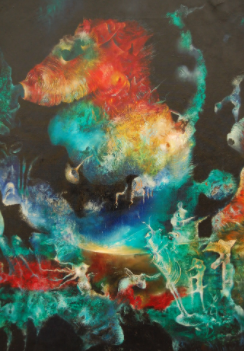
Image source: https://search.creativecommons.org/photos/8d8cf515-20b8-49ec-ad10-216be1c4d37e by unkle_sam
- Annette Labedzki received her BFA at the Emily Carr College of Art and Design in Vancouver, B.C. Canada. She has more than 25 years experience. She is the founder and developer of an online art gallery featuring original art from all over the world.
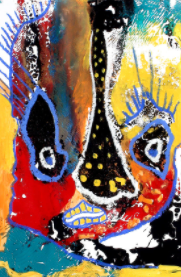
Image source:https://pixels.com/featured/my-vain-heart-annette-labedzki.html
The Spatialists painters have as a priority the coloring of the canvas, but they create on it of buildings that show the eyes of the passer, even in purely pictorial field, there is the three-dimensionality. Their intent is “to shape the new energy vibrating in the post-war world, where the awareness of the existence of hidden natural forces such as particles, rays, electrons pressed with uncontrollable force on the “old” surface of the canvas”.
- Besides Fontana’s iconic cuts we must rememberother famous artists Spatialists: Mario Deluigi engraved canvas scratching colors and creating with its scratches phantasmagoric clouds of sparks that prefigured the particle movements in the light.
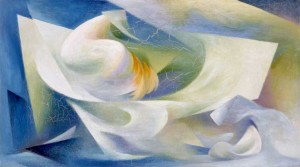
Image source: http://capesaro.visitmuve.it/en/mostre-en/archivio-mostre-en/birolli-deluigi-santomaso-vedova/2013/01/4150/project-13/
- Roberto Crippa recreated on the canvas dizzy spirals in which you can recognize the intimate form of energy, as in the orbits of electrons around the atom.
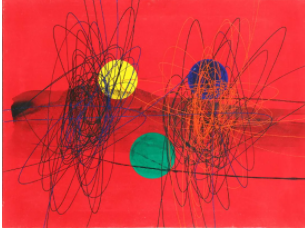
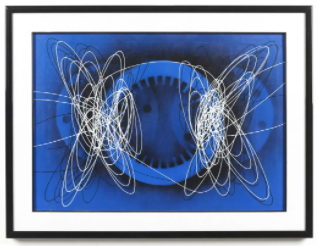
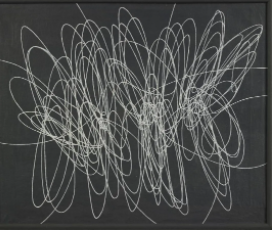
Images source: https://www.liveauctioneers.com/item/65557774_roberto-gaetano-crippa-spiral
Correlations
Spatialism Movement was influenced by three art movements, Dadaism, Tachism, and Concrete Art . Dadaism ignored the ‘aesthetics’ in Fine Arts to bring out revolutionary compositions. Tachisme, instead, was often regarded as the French style of Abstract Expressionism. Concrete Art of 1930s was predominated by the interplay of colors and lines for representation. Although, the underlying ideas behind Spatialism and the Abstract Expressionism were similar, Spatialism did away with the preponderance of paint and easel media, as the tools for creating artworks. Instead, it focused on the ‘moment’ represented as a function of time and action.
Info source:

Comments are closed.